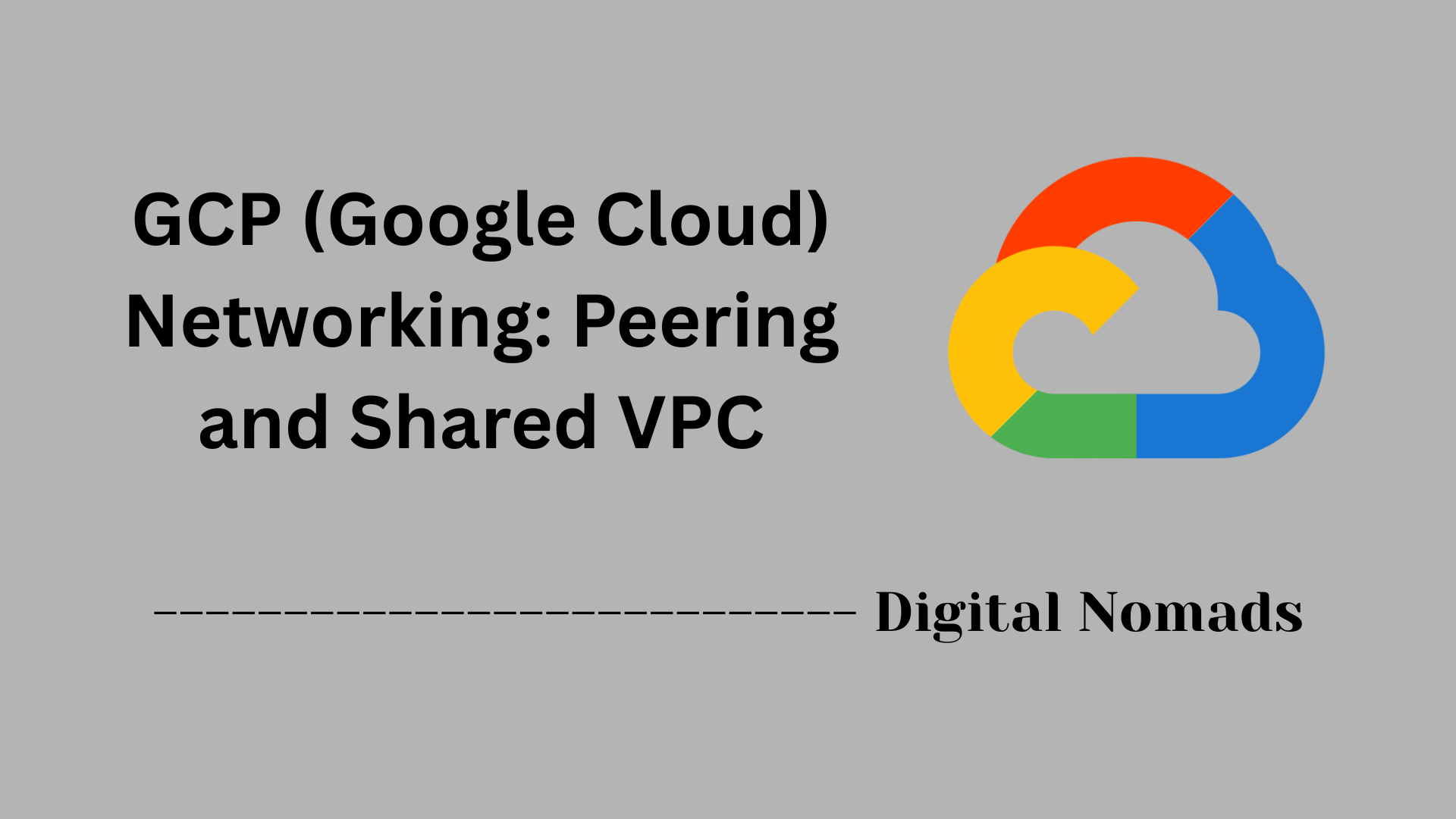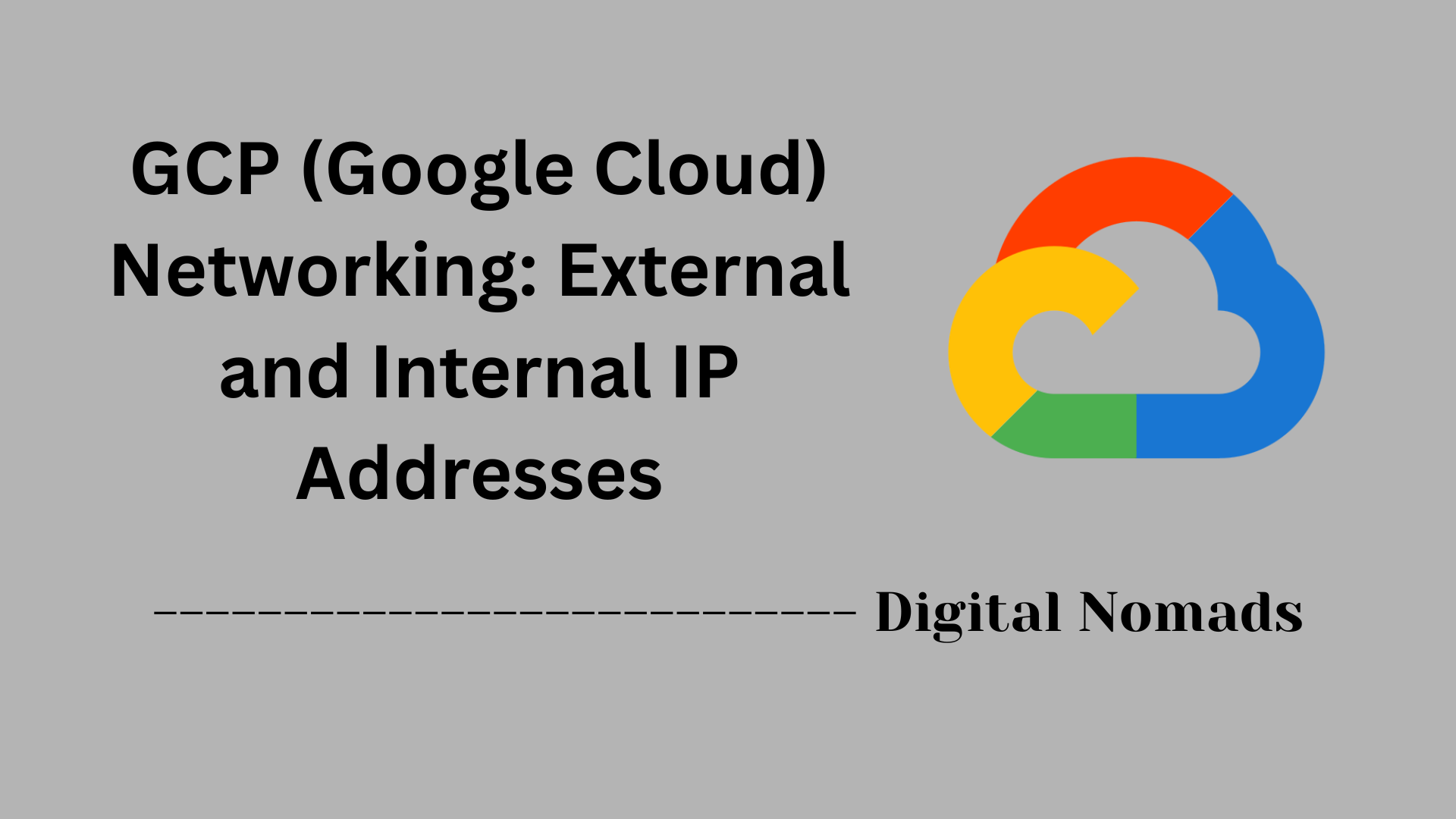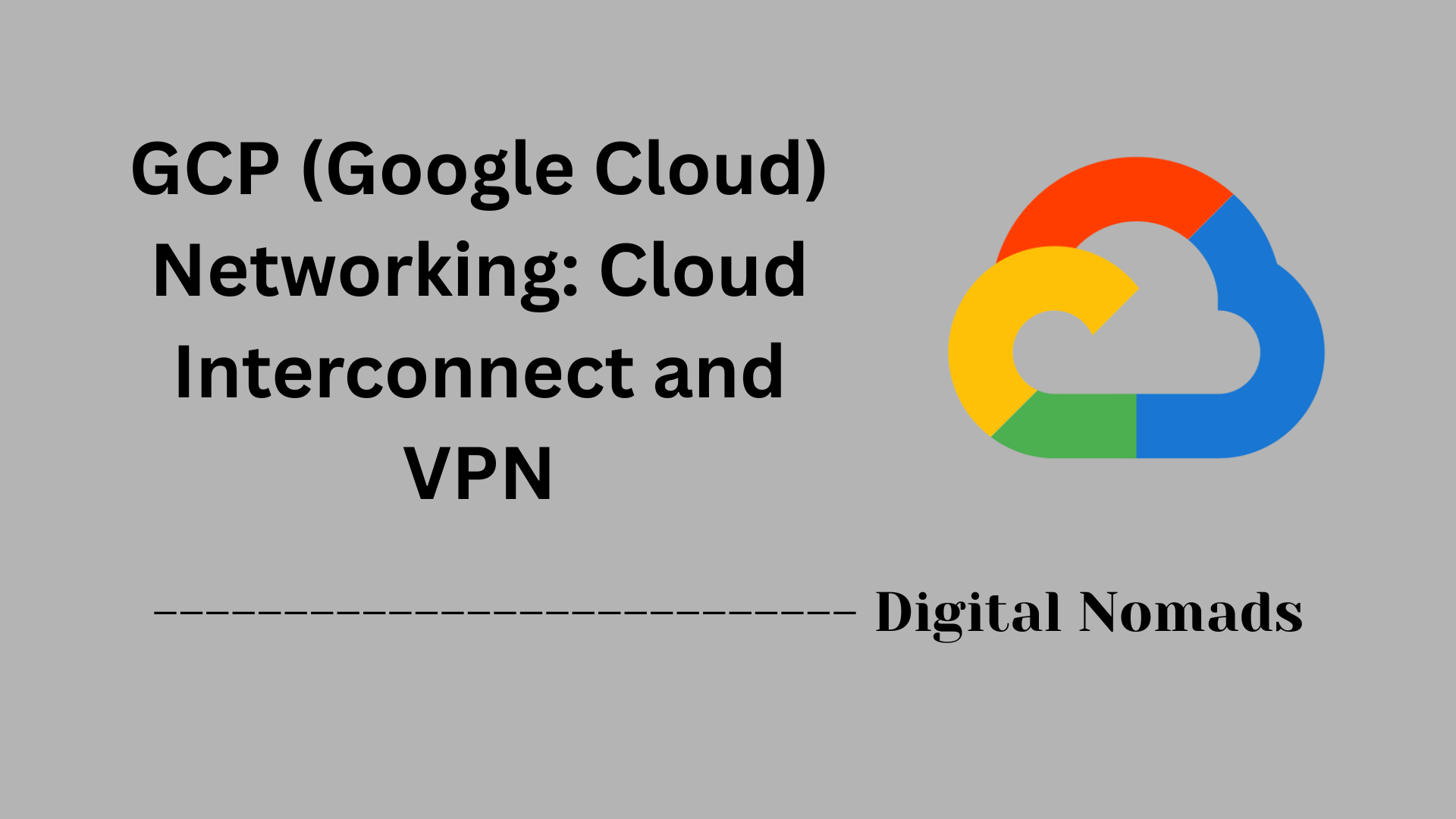Table of Contents
- Overview
- Core Components
- Key Use Cases
- Integration Table
- Configuration Options
- Administrative Considerations
- Example: Creating a GCP Router (Simplified)
- Conclusion
GCP Cloud Router: Overview
What is GCP Cloud Router?
GCP Cloud Router is a fully managed and distributed networking service in Google Cloud Platform (GCP). It facilitates dynamic routing between your Google Cloud Virtual Private Cloud (VPC) networks and connected peer networks (such as on-premises data centers, other clouds, or different VPCs) using the Border Gateway Protocol (BGP). Unlike traditional hardware routers, Cloud Router manages and programs dynamic routes in your VPC, but does not forward traffic itself—instead, it updates route tables in response to network changes.
Why You Need to Know About It
- Enables Dynamic Hybrid Cloud Connectivity:
Cloud Router is essential when connecting your on-premises infrastructure to Google Cloud via VPN or Dedicated/Partner Interconnect. It automatically advertises new IP subnets and learns connected network changes in real-time. - Supports Multicloud and Modular Architectures:
In complex environments with multiple VPCs, cloud providers, or regional deployments, Cloud Router simplifies route management, helping you maintain up-to-date and resilient connectivity as networks grow and evolve. - Reduces Manual Overhead and Human Error:
Dynamic route programming ensures your network automatically adapts to topology changes—eliminating the need to manually configure static routes every time your cloud architecture shifts. - Critical for High Availability:
By enabling rapid failover and seamless rerouting, Cloud Router supports high availability scenarios and disaster recovery solutions across Google Cloud and hybrid environments.
How GCP Cloud Router Works
- Integration with VPC:
Cloud Router operates within a VPC network and region. Once created, it establishes BGP sessions with peer routers—these could be on-premises routers, another cloud provider, or Google-managed services. - Dynamic Routing with BGP:
It uses BGP to exchange routing information. When a new subnet is added to your VPC or a peer advertises a new network, Cloud Router automatically learns and distributes these updates, ensuring all connected networks are aware of new or removed paths. - Route Advertisement and Learning:
Cloud Router can operate in "Default" mode (advertising all subnets) or "Custom" mode (advertising only selected prefixes), and it imports routes learned from peers as necessary. This continuous synchronization prevents service interruption and ensures efficient routing. - Managed and Scalable:
As a managed GCP service, Cloud Router automatically handles scaling, redundancy, and updates—removing the need for direct maintenance or physical hardware management.
In summary:
GCP Cloud Router is a pivotal networking component for organizations that need scalable, reliable, and automated route management across cloud, hybrid, or multicloud environments. It lets you build sophisticated topologies, adapt quickly to network changes, and ensure seamless connectivity at enterprise scale.
Core Components
These are the fundamental components that power dynamic routing with GCP Cloud Router:
- Cloud Router Resource: The main building block that resides in a specific region and VPC network. It enables BGP sessions and dynamic route distribution for hybrid and multi-cloud connectivity.
- BGP Session: A dynamic routing relationship established between the Cloud Router and a peer router (such as on-prem or external cloud). Each session includes configuration for IP addresses, peer ASN, and BGP route policies.
- Autonomous System Number (ASN): A unique identifier used by Cloud Router to represent its routing domain during BGP communication. It supports private ASNs for internal or hybrid routing.
- Route Advertisements: Cloud Router can automatically or manually advertise specific IP prefixes from the VPC to its BGP peers. Administrators can customize advertisement behavior using modes like Default or Custom.
- Route Import & Export Policies: Rules that control what routes are received (imported) from peers and what routes are sent out (exported). Filters can be applied to prevent unwanted routes from propagating.
- Integration with Network Services: Cloud Router acts as a control plane for routing with services like HA VPN, Dedicated Interconnect, and Cross-Cloud Interconnect. It dynamically learns and pushes routes for seamless hybrid connectivity.
- Monitoring and Logging: Exposes telemetry via Cloud Monitoring and Cloud Logging for health checks, BGP status, route learning, and failure diagnostics.
Key Use Cases
GCP Cloud Router addresses critical connectivity requirements for modern cloud networks. Below are the most common scenarios where Cloud Router excels:
-
Hybrid Cloud Connectivity:
Seamlessly connect on-premises data centers with Google Cloud using VPN or Interconnect. Cloud Router employs dynamic BGP routing to ensure that updates to network topology are automatically shared, supporting flexible and resilient hybrid networks. -
Multicloud Networking:
Establish routing workflows between Google Cloud and other public clouds (e.g., AWS, Azure). Cloud Router dynamically exchanges route information, enabling direct cloud-to-cloud communications and optimized workload distribution. -
Dynamic VPC Peering:
Facilitate communication between VPCs—within or across projects and regions—using automated route sharing. This is ideal for organizations with modular or multi-team cloud architectures. -
Automated Route Management:
Allow Cloud Router to automatically learn about new subnets and network changes within your VPC. This means updates are immediately reflected to all connected networks, reducing manual intervention and potential errors. -
High Availability and Disaster Recovery:
Use Cloud Router with redundant connections to maintain uptime and enable automatic rerouting in case of failures, supporting critical business continuity plans and rapid failover. -
Integration with Cloud Services:
Enable advanced routing scenarios with Google Cloud services such as Dedicated Interconnect, Partner Interconnect, and HA VPN, ensuring secure, scalable, and high-performance networking for diverse workloads.
Integration Table
The table below outlines how Cloud Router integrates with other Google Cloud networking services. It shows whether dynamic routing with Cloud Router is required, optional, or only used for control-plane integration.
| Product | Dynamic Routing with Cloud Router | Notes |
|---|---|---|
| Dedicated Interconnect | Required | Mandatory for automating dynamic route exchange over private connections. |
| Cross-Cloud Interconnect | Required | Enables dynamic connectivity across different cloud providers. |
| Partner Interconnect | Required | Needed to support dynamic routing with partners' network services. |
| Router Appliances | Required | Used with third-party and virtual router appliances for BGP-based routing. |
| HA VPN | Required | Required for highly available, redundant site-to-site connections using BGP. |
| Classic VPN | Optional | Supports dynamic or static routing; dynamic routing uses Cloud Router. |
| Cloud NAT | Control-plane only | Cloud Router manages configuration but does not perform BGP exchange with peers. |
Configuration Options
GCP Cloud Router offers a range of configuration options to tailor dynamic routing and connectivity for your cloud networking needs. Here are the most important configuration choices:
-
Advertisement Modes:
- Default Mode: Automatically advertises all eligible subnet IP ranges from your VPC to BGP peers.
- Custom Mode: Allows you to explicitly specify which IPv4 and IPv6 prefixes are advertised. You can include only the custom IP ranges you choose, or advertise them in addition to all subnet ranges.
- Per-Session Customization: Configure advertisement preferences for each BGP session, overriding the router-wide advertisement mode if needed.
-
BGP Session Settings:
- ASN (Autonomous System Number): Assign a private ASN to the Cloud Router for BGP communication with peers.
- BGP Peer Configuration: Specify peer IP addresses, peer ASN, authentication, and session timers for each BGP session. Choose between manual and automatic peer address assignment.
- BGP Identifier: Optionally set a unique router ID (typically an IPv4 address) for identification in BGP. This can be auto-generated or assigned explicitly.
-
Route Import & Export Policies:
- Define filtering rules to control what routes are accepted (imported) from peers and what routes are shared (exported). This prevents unwanted or overlapping routes from being propagated.
-
Keepalive Timers:
- Configure the interval between BGP keepalive messages (typically 20–60 seconds) to detect peer availability quickly and ensure stable sessions.
-
Network and Regional Options:
- Select the target VPC network and region for each Cloud Router instance. Each router operates within its defined region and network.
- For advanced scenarios, assign explicit identifier ranges for BGP sessions, especially when using IPv6.
These configuration options allow you to customize routing control, ensure proper route propagation, and fine-tune session parameters for reliable and scalable connectivity in Google Cloud.
Administrative Considerations
Effective administration of GCP Cloud Router requires careful planning and monitoring to maintain reliable, scalable, and secure network connectivity. Here are the most important considerations for administrators:
-
High Availability and Redundancy:
Deploy multiple Cloud Routers in each region for critical connections, especially when using Cloud Interconnect or HA VPN. This setup ensures failover capability and minimal disruption during outages. -
Monitoring and Alerting:
Leverage Cloud Monitoring and Logging to oversee BGP sessions, learned and advertised routes, and router health. Set up alerting policies to notify administrators of route limits, session drops, or capacity issues. -
Security Practices:
Enable BGP session authentication (such as MD5) if supported by both peers to protect against unauthorized route announcements and session hijacks. Use network policies to restrict access and monitor route changes. -
Quotas and Limits:
Regularly check router quotas, such as the number of BGP peers, learned routes, and advertising prefixes. Set up alerts if you approach these quotas to avoid service disruption. -
Network Topology Updates:
Understand the propagation and convergence timeline when adding or removing subnets, peers, or policies. Plan scheduled changes during maintenance windows to minimize impact. -
Best Practices for Dynamic Routing:
Enable Bidirectional Forwarding Detection (BFD) on supported devices for faster failure detection. Use graceful restart on BGP peers to mitigate the effect of short-term connectivity losses. -
Compatibility and Integration:
Ensure Cloud Router is only used for supported connection types (Interconnect, HA VPN, etc.), as it is not available for Direct Peering or Carrier Peering. Confirm integration requirements with other network appliances. -
Regular Reviews and Audits:
Periodically review route advertisements, import/export policies, and router configurations to ensure alignment with evolving network requirements and security standards.
Example: Creating a GCP Router (Simplified)
Follow these straightforward steps to create a Google Cloud Router for dynamic routing in your VPC network. This example demonstrates the process using the Google Cloud Console and a simplified CLI YAML configuration.
-
Navigate to Cloud Router:
In the Google Cloud Console, go to the Network Connectivity section and select "Cloud Router." -
Create a New Router:
Click on "Create Router." Fill in the following details:- Name: Assign a unique name, e.g.,
example-router. - Network: Select your target VPC network.
- Region: Choose the region in which the router will operate.
- Google ASN: Enter a private ASN (e.g.,
64514). - Advertisement Mode: Choose "Default" to advertise all subnets, or "Custom" to specify ranges.
- Name: Assign a unique name, e.g.,
-
Configure BGP Peer (Optional):
After creating the router, configure BGP sessions to define communication with peer routers (such as on-premises or other cloud providers).- Peer Name: Give your peer a name.
- Peer ASN: Enter the autonomous system number for the peer.
- Peer IP Address: Specify the IP address of the peer router.
-
Review and Create:
Verify your settings and click "Create" to deploy the Cloud Router. -
Sample YAML (for automation):
You can also define a Cloud Router using YAML for use in Infrastructure as Code workflows.- name: example-router network: your-vpc-network region: us-central1 bgp: asn: 64514 advertise_mode: CUSTOM advertised_groups: - ALL_SUBNETS advertised_ip_ranges: - range: 10.0.0.0/24 state: present
This example quickly gets you up and running with GCP Cloud Router, forming the foundation for dynamic and scalable network routing in your cloud environment.
Conclusion
Throughout this post, we explored the powerful capabilities and flexible architecture of GCP Cloud Router, a foundational tool for dynamic, scalable, and hybrid cloud networking in Google Cloud.
Here’s what we covered:
- Core Components: From BGP sessions to route advertisements, these building blocks enable Cloud Router to automatically exchange routes with your on-prem or cloud peers.
- Key Use Cases: Whether you're building a hybrid cloud, connecting multi-region VPCs, or supporting cross-cloud communications, Cloud Router simplifies routing and scalability.
- Integration Table: We learned how Cloud Router integrates with network services like HA VPN and Interconnect, and when it's required, optional, or control-plane only.
- Configuration Options: Fine-tune your routing with custom ASN setups, advertisement modes, and route import/export policies.
- Administrative Considerations: Best practices, monitoring, redundancy planning, and security all play important roles in managing Cloud Routers effectively.
- Hands-on Example: We walked through a simplified and practical way to deploy a Cloud Router, both through the console and YAML.
GCP Cloud Router makes enterprise-grade dynamic routing easier to manage in complex cloud landscapes. Whether you’re expanding into hybrid cloud, connecting multiple projects, or optimizing inter-region traffic, Cloud Router gives you both the power and flexibility you need.
Thanks for following along! 😊
If you're diving into Google Cloud networking, we hope this guide helped demystify the Cloud Router and gave you the confidence to start building more intelligent network architectures. Happy networking! 🚀




